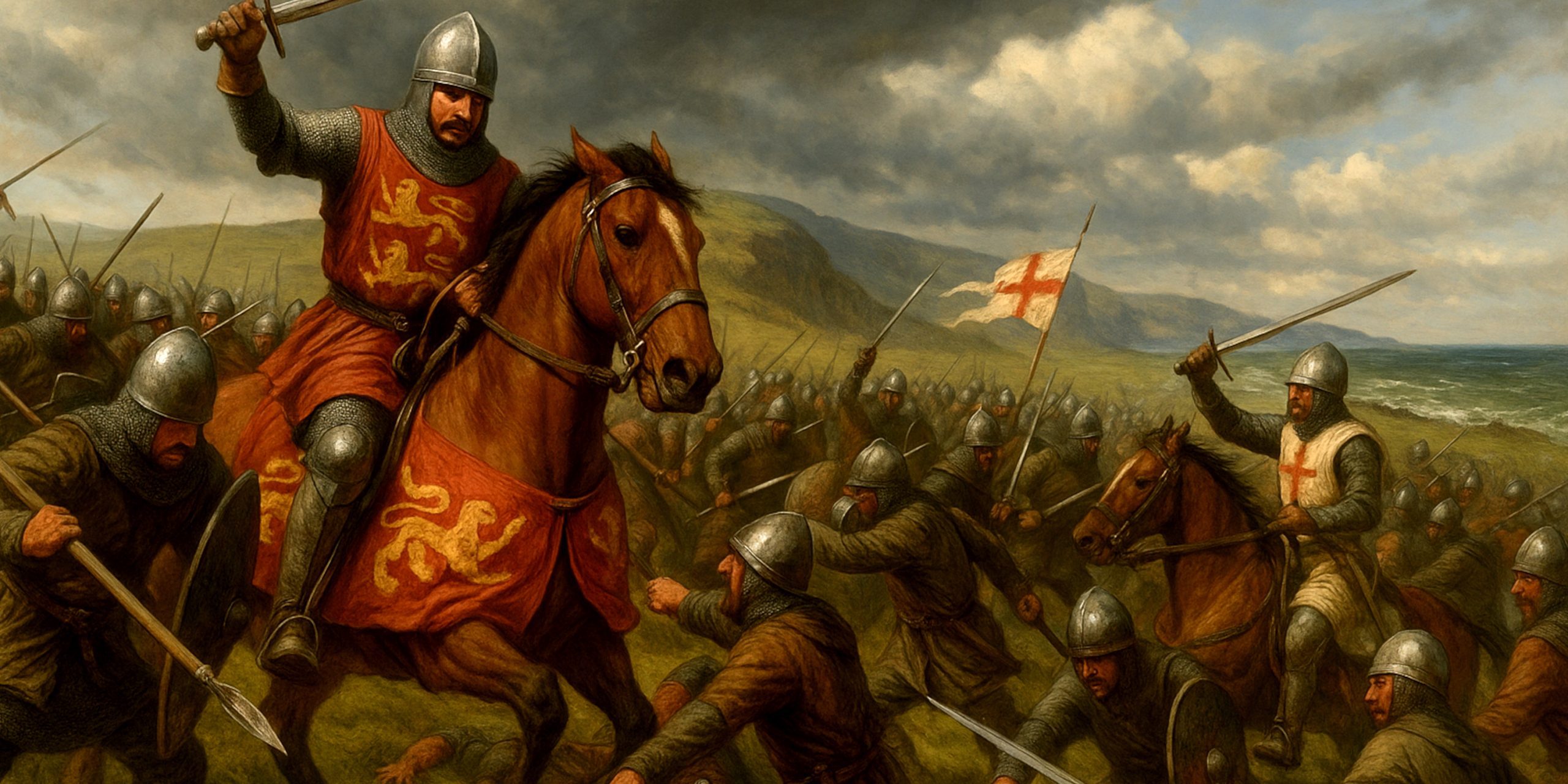
The Battle of Dunbar in April 1296 was one of the opening clashes of the First War of Scottish Independence. It marked the collapse of organised Scottish resistance after Edward I of England invaded. The defeat forced Scotland into submission and set the tone for English dominance in the years that followed.
Background
In the early months of 1296, Edward I sought to punish Scotland for its alliance with France. After storming Berwick, where thousands of townsfolk were slaughtered, he turned north. Scottish forces gathered under King John Balliol and his nobles, hoping to halt the advance. The castle of Dunbar, perched on the coast of East Lothian, became a key stronghold.
Forces
Leaders
| Side | Commander(s) | Notes |
|---|---|---|
| Kingdom of Scotland | John Balliol (nominal), Earls of Ross, Atholl, and Mar | Divided leadership, little coordination |
| Kingdom of England | John de Warenne, Earl of Surrey | Experienced commander, supported by Edward I’s army |
Troop Composition
- Scotland
- Knights and men-at-arms from the nobility
- Light infantry armed with spears and small shields
- Archers from the lowlands
- Estimated 10,000 to 15,000 men
- England
- Heavy cavalry of mounted knights
- Longbowmen and crossbowmen
- Infantry with polearms and swords
- Estimated 12,000 to 15,000 men
Arms and Armour
- Scottish
- Knights equipped with mail hauberks, kite shields, and arming swords
- Infantry wielded spears, axes, and long knives known as dirks
- Few helmets and limited plate protection
- English
- Knights carried longswords and arming swords
- Infantry equipped with poleaxes and falchions
- Archers used the longbow, already becoming a decisive weapon
- Armour included reinforced mail, great helms, and surcoats bearing heraldry
The Battle
The Scottish army occupied high ground near Dunbar, hoping to outflank the English. Believing the enemy was in retreat, the Scots descended from their defensive position. The English seized the moment and launched a counterattack with disciplined cavalry charges. Scottish lines broke quickly, and the retreat turned into a rout. Thousands were captured, including many noblemen.
Archaeology
Little physical evidence remains on the battlefield, as Dunbar has long been developed and altered. Excavations around Dunbar Castle have revealed Norman stonework and medieval fortifications but few traces directly tied to the battle. Artefacts such as arrowheads and fragments of weaponry occasionally emerge in local digs, though they are difficult to connect with certainty to 1296.
Battle Timeline
- March 1296 – Edward I sacks Berwick, devastating the town.
- April 1296 – English forces move north, threatening Scottish castles.
- 27 April 1296 – Scottish army gathers near Dunbar.
- 27 April 1296, afternoon – Scots leave high ground, thinking the English are retreating.
- Shortly after – English cavalry charges, breaking Scottish lines.
- Evening – Thousands of Scots are killed or captured. Nobles are sent to England in chains.
Contemporary Quotes
- The Lanercost Chronicle records: “The Scots, descending from the hill in their folly, were cut down by the horsemen of England as sheep before wolves.”
- Walter of Guisborough wrote: “So great was the slaughter that the very fields were choked with the fallen.”
The Seven Swords Takeaway
The defeat at Dunbar destroyed the credibility of King John Balliol. Within weeks, Edward I forced his abdication, humiliatingly stripping him of his royal insignia. Scotland was left without effective leadership until William Wallace and Andrew de Moray rose in rebellion the following year. The battle demonstrated the superiority of English discipline and cavalry, but it also sowed the seeds of Scottish resistance that would continue for decades.
Watch the documentary:



